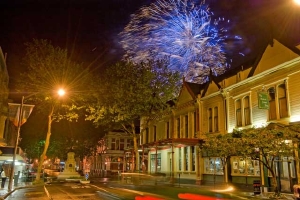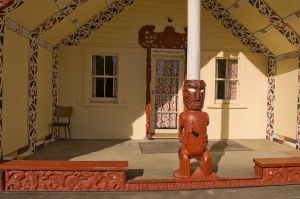BEST VIEWED IN LANDSCAPE MODE ON MOBILE DEVICES
U.S.FTC GUIDELINES PLEASE NOTE: we act as an affiliate for several companies that feature on our website. In some cases we may earn a commission from referrals to those companies. For further information please refer to our Privacy and Disclaimer policies which can be found in the "US" tab.
U.S.FTC GUIDELINES PLEASE NOTE: we act as an affiliate for several companies that feature on our website. In some cases we may earn a commission from referrals to those companies. For further information please refer to our Privacy and Disclaimer policies which can be found in the "US" tab.
Wonderful Whanganui, in New Zealand's lower North Island, is a region with an historic past.

Dominated by the Whanganui River, the region features ancient forests and is rich in history.
Sitting to the north west of New Zealand's capital
Wellington, the region boasts a beautiful coastline.
The area is popular with outdoor enthusiasts and photographers, with everything from rafting and hiking, to rides on a historic paddle steamer attracting thousands of visitors to the region.
Getting Here
By Road
Whanganui is located around two and a half hours drive north of Wellington (via State Highway 1 then State Highway 3).
From Auckland to Whanganui is around five and a half hours drive south, via State Highway 1.
Please refer to our State Highways map.
By Air
At the time of writing, flights to Whanganui were available from Auckland airport.
For more information please refer to the Whanganui Airport website by clicking here.
Want to see the sights?
If your time in here is limited then this could be the perfect tour for you.

Your fully guided mini bus tour takes in all the main attractions in town and is a great way to see the city if all you can spare are a few hours.
After collection from your motel, you're taken to the local tourist office where you meet your local guide, and join your mini bus for your tour.
The first stop is at the Durie Hill Elevator and Tower. The views from the top are stunning and look over the ocean and towards Mount Taranaki and Mount Ruapehu. The elevator costs a couple of dollars (not included in your tour cost) but it's well worth it as the views are awesome.
From here the tour continues to the Basin Botanic Gardens and the pretty Virginia Lake, then onto other points of interest including the Royal Opera House.
It's an informative tour and as we said, if your time here is limited, it's well worth the money.
Check it out by clicking on the button below:
Wanganui - River City
Wanganui, known as the "River City", is the largest city in the region and sits at the mouth of the Whanganui river.

Wanganui's older buildings have been preserved and protected and give a snapshot of the region's history.
The region's natural environment is relatively untouched and is perhaps its major attraction.
Rainforests offer the perfect environment for the protection of many endangered native birds including the iconic kiwi.
If
you are planning to stay in Wanganui, there is a good range of
accommodation available. Click on the following link to search for Wanganui hotels.
Heritage and Maori Culture
Maori legend has it that the great navigator Kupe discovered the Whanganui river. But Tamatea (the captain of the Takitimu canoe) was the first to fully explore the region. Following Tamatea's exploration, more Maori tribes came to the area.

They built fortified villages (known as pa) and fishing villages along
the river banks and as a result, the Whanganui River became an important
travel and trade route.
These days, the Whanganui is still an
important part of local culture. The Maori have a proverb which goes "I
am the river, the river is me". This proverb explains their deep
spiritual relationship with the river.
The river is the basis for
many ancient Maori legends, and a trip along the river will reveal a
lot about how deeply ingrained it is into modern society.

One way to experience this is on a guided canoe trip, where Maori guides
will take you to two marae (meeting houses) on the river banks, where
they can stay overnight, and participate in Maori cultural traditions.
The
Tieke marae is a popular overnight stop for canoeists. This pa has been
revived and now offers accommodation for visitors, who also receive a
powhiri (a traditional Maori welcome) to the land.
The Koriniti
marae is close to Wanganui city, and accommodates large groups for
visits and overnight stays. Visitors receive a powhiri welcome, and get
the opportunity to take part in a kapa haka (Maori performing arts),
traditional weaving and a mouth watering hangi, where food is cooked in
an earth oven.
For a detailed look at local Maori culture,
Wanganui Regional Museum has many displays which highlight the impact of
the river on the local people.
Experience The Outdoors
Local efforts to protect the
environment have been significant, and have earned the region a
reputation as a leader in environmental management and sustainability.

Sitting near Kai Iwi (between Wanganui and New Plymouth) the Bushy Park
forest reserve has been developed as a predator free bird sanctuary.
This 100 hectare native forest has been maintained by the Royal Forest
and Bird Protection Society since the 1960s, and offers New Zealand
birds a safe place in which to live and breed. The reserve even includes
a centre for rearing young kiwi.
The park has a network of well
maintained trails which take visitors deep into the forest, to
experience the area as it was before the arrival of civilisation. The
reserve is home to New Zealand's largest known Rata tree, Ratanui, a
1000 year old specimen standing 43m tall and with a girth of 11.5
metres!
Around 45 minutes from Wanganui, the Flying Fox eco lodge is accessible only by water taxi or aerial cableway. It has
two quaint cottages offering lovely views of the river and is a good base for exploring the region.

If you have the chance, a guided canoe journey is a wonderful way to
explore the river. And don't worry if you have little or no canoeing
experience. The tours range from one to five days and cater for all
skill levels.
The trip down the river is known as the
Whanganui Journey
, and is classified as one of New Zealand's "Great Journeys". A pass is
required from the Department of Conservation (DOC) during the October to
April tour season. DOC provide campsites and huts along the journey and
there is also some private accommodation available.
Another
river based activity is the jet boat ride to the "Bridge to Nowhere",
recognised as the last link to settlement on the river.
For something a little more sedate, how about a leisurely ride on a
historic paddle steamer
? This once popular form of transport is a relaxing way to see the river
and a variety of cruises are available including lunch and dinner
cruises.
The region has some excellent walks and tracks, ranging from hours to days in length. The
Matemateaonga track
takes three to four days and covers 42 kilometres. The walk takes you
into the Whanganui national park via an old dray road and Maori trail.
Here Are A Few More Things To Do In The Region
* The 33.5
metre Durie Hill elevator and tower in Wanganui offers views of the
region, and in clear conditions you can see distant Mt Taranaki and Mt
Ruapehu.

* The Whanganui Regional Museum has a great collection of artefacts,
art, and natural history displays. Notable exhibits include the
magnificent 22 metre long waka (war canoe), the Lindaur Gallery,
featuring a collection of 20 paintings, and a collection of Moa bones
(New Zealand's extinct giant bird).
* The 91 kilometre long
Whanganui River Road follows the river for much of its length and is a
picturesque route. Points of interest are the historic Kawana Flour Mill
and the Koriniti Maori marae (meeting house) dating back to 1845. Care
is needed as the road is narrow and winding in parts, and still has an
unsealed section. Please check with your hire car company as you may not
be covered by your insurance in the event of an accident on unsealed
roads.
Some Interesting Facts
* Whanganui river is New Zealand’s longest navigable river.
* Whangaui refers to the river, national park and region, but there is no ‘h’ in the city of Wanganui.
* Wanganui’s Durie Hill elevator, built in 1919, is one of only two earth-bound elevators in the world.
Click on the following link for more information on the Whanganui region.
Maps



